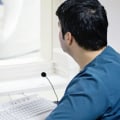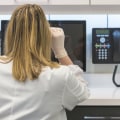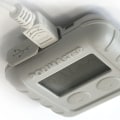A dosimeter is an instrument used to measure exposure to ionizing radiation, such as alpha or beta particles, neutrons, gamma rays, or X-rays. It is an essential tool for people working in situations where they are exposed to radiation. A radiation dosimeter is a device that measures the dose absorption of external ionizing radiation and is used by the person being monitored when using it as a personal dosimeter. It is also a record of the radiation dose received. Modern electronic personal dosimeters can provide a continuous reading of the cumulative dose and the current dose rate, and can warn the user with an audible alarm when a specified dose rate or cumulative dose is exceeded.
Other dosimeters, such as thermoluminescent or film types, require post-use processing to reveal the cumulative dose received and cannot give a current dose indication while in use. Dosimeters benefit anyone working with or near radiation, as they allow people to track their personal exposure and also allow management to monitor staff exposure on a daily and cumulative basis. Anyone who is occupationally exposed to ionizing radiation and who is likely to receive a dose greater than 10 percent of the applicable annual allowable limit will receive a radiation monitoring device (radiation dosimeter). The person uses the radiation dosimeter to monitor and track exposures to external radiation. People working with volatile or large quantities of unsealed radioactive material should undergo in vivo or in vitro bioassay measurements to assess intake of radioactive material and determine the corresponding radiation dose. Thyroid probes are performed on workers who handle I-131 and I-125 as sodium iodide, and urine bioassays are performed on workers who handle high beta-emitter activities.
In addition, bioassays are performed as part of the response to accidental spills or releases. Unlike the best-known Geiger counter, which measures the amount of radiation present in a given area from one moment to another, various types of radiation dosimeters are used to track radiation exposure in an area or in a person over an extended period of time. The dosimeter is located on or adjacent to the items that are irradiated during the process as a validation of the received dose levels. Ring dosimeters should be used on the hand most likely to be exposed, that is, the hand closest to the radiation sources. The ion chamber dosimeter, like the thermoluminescent one, is reusable, but is automatically read for immediate exposure determination. Manufacturing processes that treat products with ionizing radiation, such as food irradiation, use dosimeters to calibrate the doses deposited on the matter being irradiated.
At the end of the usage period, replacement dosimeters will be distributed to you through the designated badge coordinator. When phosphor crystals that have captured electrons are heated, they release these trapped electrons in the form of light which can be measured to accurately determine the amount of radiation to which the dosimeter was exposed. Fetal dosimeters have a monthly frequency and should be worn at waist level, under any lead garment. As gas in the dosimeter chamber is ionized by radiation, charge escapes causing fiber to straighten and thus indicating amount of dose received against graduated scale which is observed with small built-in microscope. The dosimeter plays an important role within international radiation protection system developed by International Commission on Radiological Protection and International Commission on Radiation Units and Measures. To avoid this everyone working with, in or around radioactive substances or environments uses a dosimeter, sometimes called a radiation plate, radiation band or TLD detector. Radiographers, nuclear power plant workers, doctors using radiation therapy, hazardous materials workers and others in situations involving handling of radionuclides must often use dosimeters in order to record occupational exposure.
Dosimeters are used by researchers, maintenance personnel and anyone else working in potentially radioactive environment. Alternative high-k gate dielectric radiation dosimeters such as hafnium dioxide and aluminum oxides are also proposed as radiation dosimeters.


